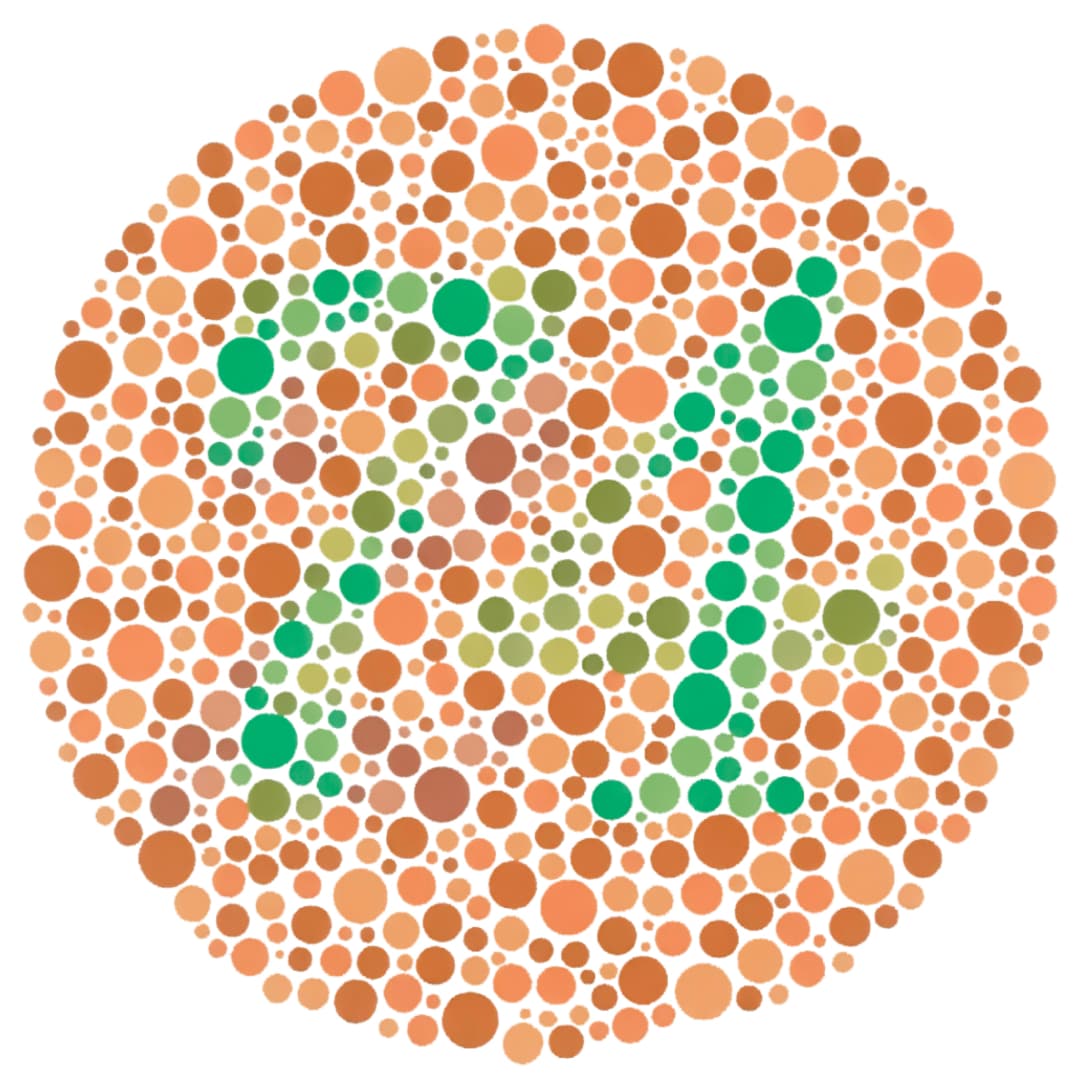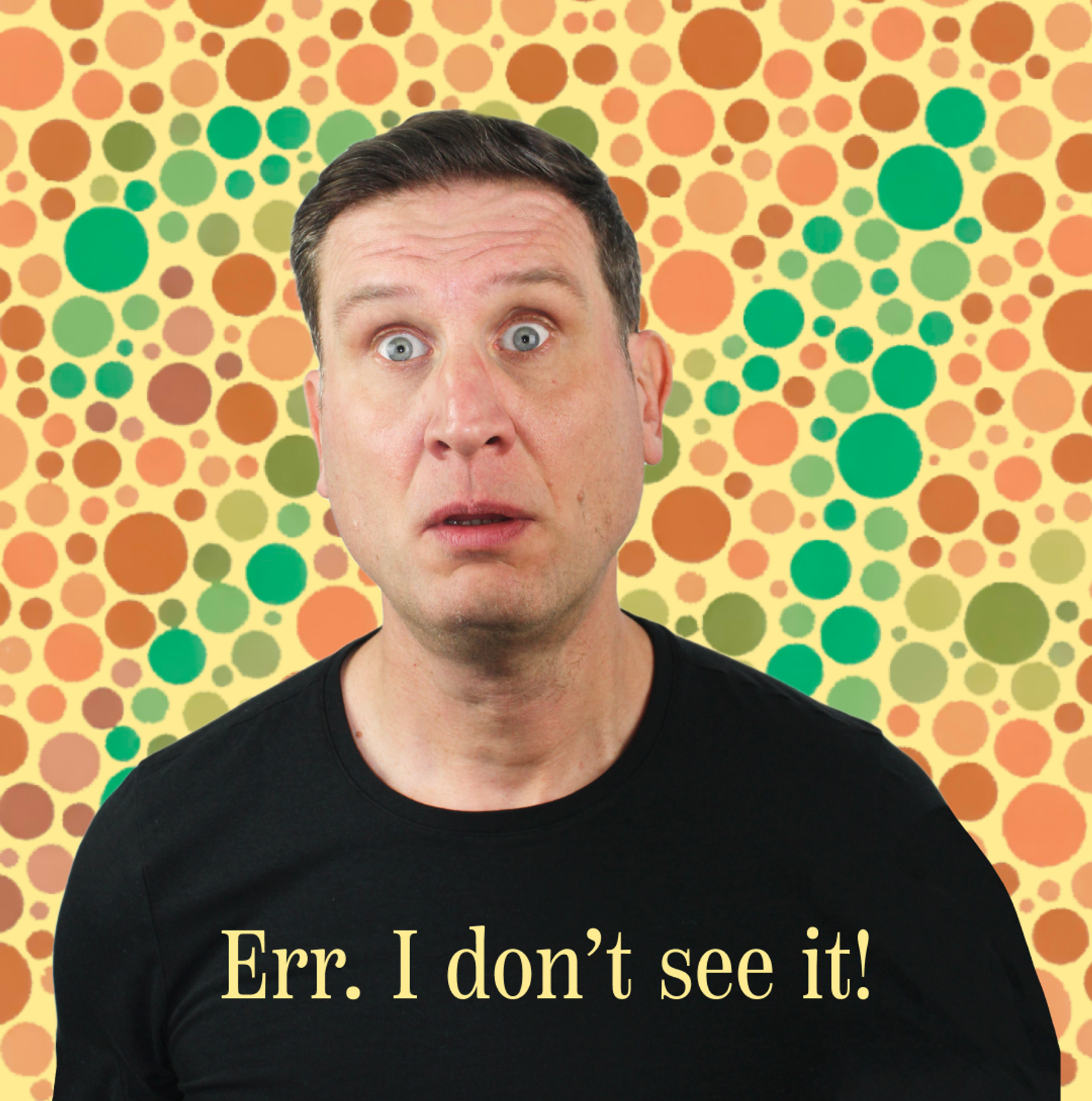Is colour blindness a disability?

Yes and no (but it should be).
In America, colour blindness is considered a disability according to the Americans with Disabilities Act (ADA); however, here in the UK it is not regarded as a disability as there is ambiguity around the definition of a disability in the Equality Act 2010.
In fact, legal cases brought in the UK concluded that as the claimant — a man with Deuteranopia (red/green colour blindness) — had coping strategies so he did not fall into the category of ‘suffering substantial and long-term adverse effect on a person's ability to carry out normal day-to-day activities’.
Colour blindness, or colour vision deficiency (CVD) is a common genetic condition that affects 3 million people (4.5% of the population) in the UK. Red/green colour blindness is the most prevalent affecting 1 in 12 men and 1 in 200 women. The severity of colour blindness can range from the complete inability to see colours to it being barely noticeable — the latter contributing to low rates of formal diagnosis as many are not even aware that they have the condition.
Colour blindness causes issues in many areas of life, including:
- Difficulty at school
- Reading maps (including the London Underground)
- Confusing medications
- Trouble identifying safety warnings or signs (for example, battery status indicator on electrical devices)
- Limited career choices (e.g. you cannot be a pilot)
- Difficulty cooking, reading, and interpreting documents
- Difficulty watching sport
For some, being colour blind is embarrassing and, like me, many keep that their secret for too many years in fear of being ridiculed. Trust me, choosing Graphic Design as a career is a difficult choice when you are colour blind.
My personal battle
I have trouble seeing the following combinations of colours and these are some of main colour combinations it is recommended to avoid:
- Red and Green
- Brown and Green
- Purple and Blue
- Yellow and Light Green
- Grey and Green
- Black and Green
Small patches of tonally similar colours are also very difficult for me to identify as everything looks the same: grey.

Having met the challenges of being a colour blind graphic designer and, later, a web designer — I clearly was destined to become an accessibility consultant. Who better to check colour and contrast than someone with colour blindness
Is colour blindness a disability?
When people think of digital accessibility, they typically focus on users who are blind and use a screen reader or someone with limited mobility and use other assistive technologies. But there are many other disabilities that require good design choices and, in my biased opinion, colour blindness is right up there.
The social model of disability states that society disables people rather than the person has a disability. This thought was buzzing in my head when I was on a website trying to book an MOT. I got frustrated that none of the dates on this calendar were clickable in December…
The dates being in red did not help me, nor did viewing the calendar for January where the green and red links look identical. At this point, many users may have left, but I preserved clicking on everything until I hit the jackpot.
The Equality Act 2010 classifies a disability as…
- A person (P) has a disability if—
- P has a physical or mental impairment, and
- the impairment has a substantial and long-term adverse effect on P's ability to carry out normal day-to-day activities.
I would suggest that booking an MOT is a normal day-to-day activity.
To be clear. I am not after any sympathy or demanding colour blindness is categorised as a disability, but the struggles are real. They affect me every day.
What changes can you make to improve the accessibility of your website for colour blindness?
There are a few things to consider when designing any web component like this calendar.
- Avoid colour combinations known to cause problems — especially those that affect red/green colour blindness listed above.
- If you do need to use red/green ensure that the links can be identified by a different means. Icons or shapes are a good solution.
- An oldie but goodie. Add an underline to links to indicate they are an interactive element.
- Consider all the interactive states: inactive, hover and active. In the example calendar, a border or background colour on the hover state to the box containing the day would help.
- This is a bit advanced, but add a roving tab index to a calendar like this…
Why is the roving tabindex important? When using the tab key to navigate between interactive elements, every day element (with a link) on the calendar would need to be navigated — meaning the users could be required to tab 31 times to get past this block to access the content that proceeds it. In this calendar example, the user can use the arrow keys to navigate the day elements.
Wrapping this up
Sadly, the calendar in this article is taken from a real-world example and none of the interactive elements had a hover state so it was fun to work out what you were doing.
In case you are interested I did book an MOT, but with another garage.
I also contacted the owners of the original website to see if I could help them.
Article by Simon Leadbetter
The Accessibility Guy at Kindera

